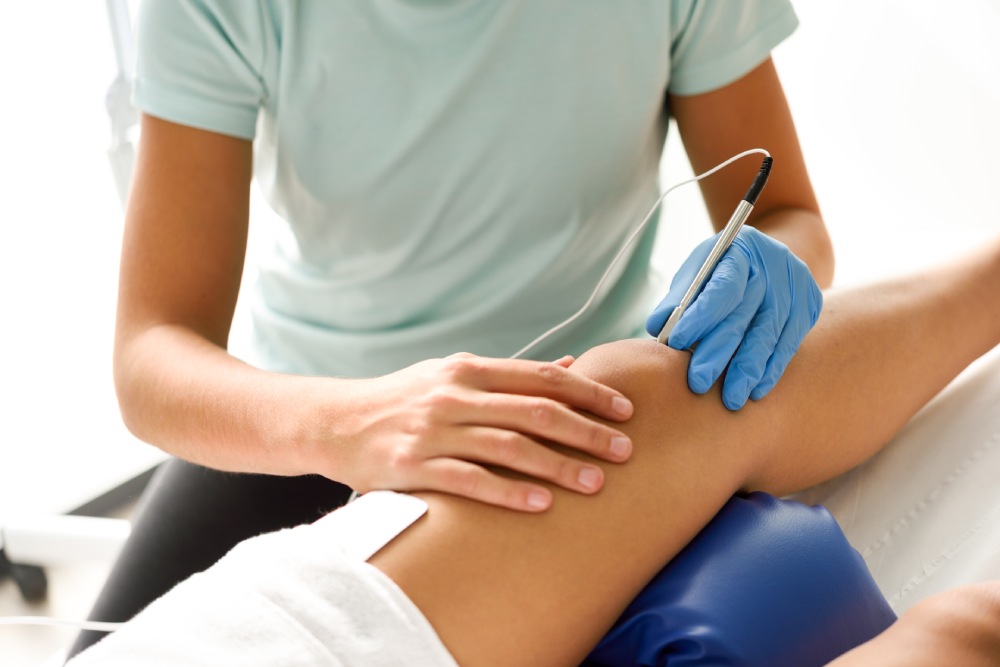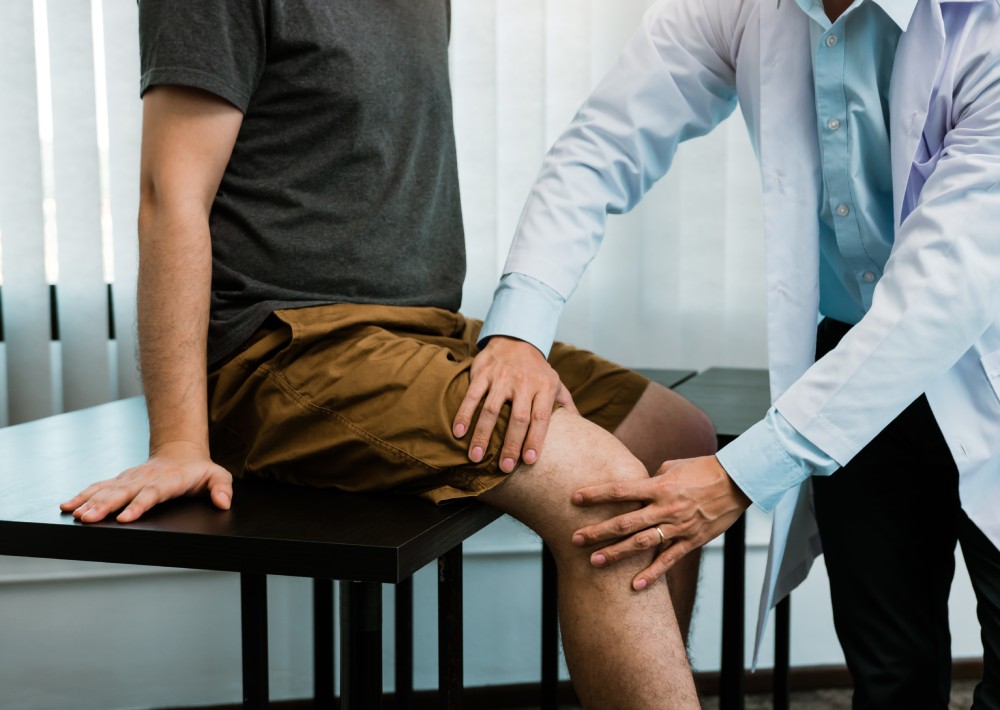- Traverse City, MI |
-
West: W Front St:
(231) 944-6541
-
| Central: Munson Ave :
(231) 421-9300


The tendon connecting the kneecap to the shin bone is called the patellar tendon.
It works with the thigh muscles to extend the knee. This mechanism is used when kicking, running, and jumping.
Patellar tendonitis occurs when the patellar tendon becomes inflamed. This condition is also called jumper’s knee because it frequently occurs in athletes or people who perform jumping repetitive jumping activities. It can also develop in people who repeatedly overuse their knee joint.
Patellar tendonitis starts as weakness in the tendon. If left untreated, this condition can lead to tears in the tendon as well.
The following are the most common symptoms associated with patellar tendonitis:
Weakness in the knee area that can turn into discomfort and pain.
Pain where the tendon in the kneecap attaches to the shin bone.
Tenderness around the patellar tendon or behind the lower part of the kneecap.
Swelling in the kneecap area.
Pain worsens when jumping, running, or even walking
Pain worsens when the leg is straightened or bent.
Pain may get progressively worse until activities like climbing stairs are affected.

In severe cases where there is a large tear of the tendon or when the tendon has completely separated from the kneecap, the individual may hear a popping sound or feel a popping sensation. This will make even straightening of the leg very difficult.
These symptoms may resemble other similar conditions. It is best to have a medical professional diagnose the condition accurately.

Patellar tendonitis is most commonly associated with overuse. Repeated stress on the patellar tendon can weaken the connection and eventually lead to tears. The body first attempts to repair these tiny tears but continued stress can lead to more serious injuries.
As the tears get larger and multiply, the pain and inflammation causes further weakening of the tendon.
The following are risk factors that may increase the likelihood of developing jumper’s knee:
Tight leg muscles – The tightness of the quadriceps and hamstrings can directly increase the stress placed on the patellar tendon.
Repeated stress – Physical activities like running and jumping are the most commonly associated causes of patellar tendonitis. Changes or sudden increases in the intensity of these activities may also place unusual stress on the tendon causing tears.
Muscular imbalance – Similar to the tightness of the thigh muscles, if some parts of the leg have stronger muscles than others, it may cause uneven stress on the patellar tendon which can lead to tendonitis.
Chronic Illness – In some cases, an illness may block or reduce blood flow to the knee which effectively weakens the tendon and makes it susceptible to tendonitis.

Get more info on patellar tendonitis from Mayo Clinic by Clicking Here.
We've got more info on this and many other topics on our BLOG. Find out how to heal your pain by Clicking Here.

Rest – Doctors may advise against continuing activities that worsen the pain in the leg.
Ice – Ice packs reduce the swelling in the affected area, alleviating pain in the process.
Medication – Over-the-counter nonsteroidal anti-inflammatory drugs may also be recommended to manage the pain.
Brace – Doctors may also advise the use of braces for three to six weeks to better rest the affected leg. They may even need the use of crutches to better support their weight.
Surgery – If the more conservative options do not work, especially if there is a complete tear, doctors may recommend surgery. This increases the recovery time to six months.
While the treatment options previously mentioned may be effective in managing short-term pain, without addressing the actual underlying cause, patellar tendonitis may return in the future.
At Superior Physical Therapy, we understand how the body is a complex system of moving parts that require a more holistic evaluation and solution. Muscular imbalance, for example, should be addressed to make sure patellar tendonitis does not recur.

We offer the following treatment options:
The most important element of healing is identifying the cause. The cause is a movement disorder somewhere else in the body that is creating more stress in the injured area than the tissue can handle. A full body movement assessment is the most important aspect in finding the true cause. This involves assessing how mobile and stable the areas above and below the injured tissues are. Once the dysfunctional areas are identified the physical therapist can then prescribe home treatments to fix the problem areas
Using mechanical vibrations aimed to penetrate deep into the muscle tissue, circulation as well as lymphatic flow are improved. This promotes tissue regeneration and pain relief.
In order to improve motion in the dysfunctional areas that are causing the increased stress on the painful injured tissues the most effect way to make a change in the body is to have a physical therapist use their hands to facilitate the proper motion while you are moving at the same time. This helps improve the path the body takes in order to reduce stress and tenson on the injured area.
Find out which of these treatment options are right for you with a quick and easy discovery call with our own Dr. Andrew Gorecki. In the past 15 years, he has been working hand-in-hand with patients to identify the right causes and find solutions that bring long-term relief.
Take the first steps in finding lasting relief from your patellar tendonitis when you book a free consultation with us. Dial 231.944.6541 or send an email to info@thesuperiortherapy.com to get started.
